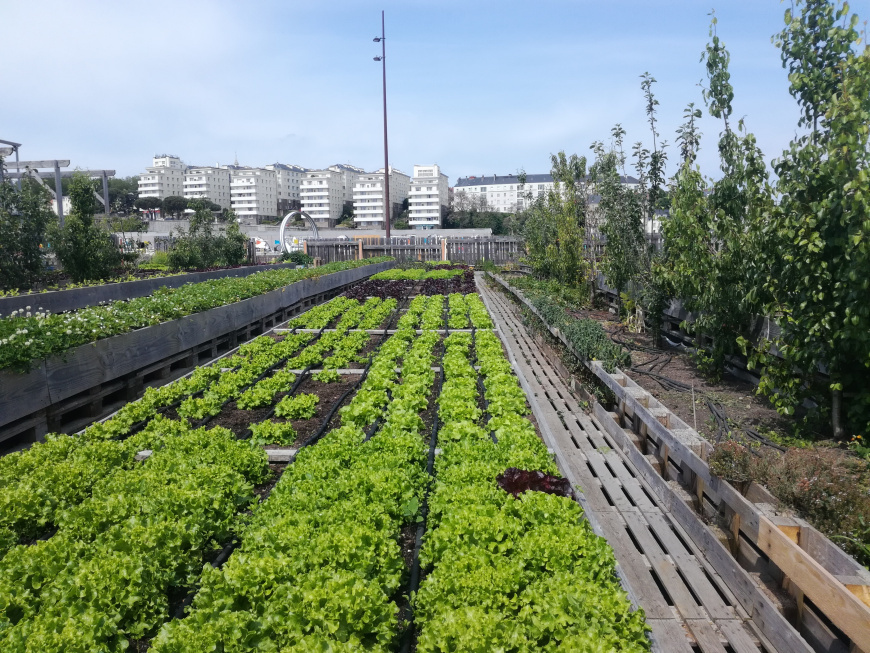Examine This Report on City Blooming
Examine This Report on City Blooming
Blog Article
The Facts About City Blooming Uncovered
Table of ContentsTop Guidelines Of City BloomingThe Best Guide To City BloomingWhat Does City Blooming Do?The Greatest Guide To City Blooming4 Easy Facts About City Blooming Shown
Fascinated in expanding food available for sale in the City of Chicago? Considering beginning a neighborhood yard? Adjustments to the Chicago Zoning Ordinance allow farming uses like community yards and city farms in several parts of the city. Below is a list of regularly asked concerns regarding the regulations and policies that farmers must think about when preparing an urban agriculture task.
The zoning amendment does not change any various other codes taking care of composting, building authorizations, buying or leasing City owned home, business licenses or ecological contamination. There are existing codes that manage these problems and they stay in complete impact and might apply to your job. Community gardens are typically had or taken care of by public entities, public organizations or community-based companies and kept by volunteers.
Urban farms grow food that is meant to be marketed, either on a nonprofit or for-profit basis. Due to their business objective, urban ranches require a company certificate. Yes. A neighborhood yard is allowed to offer excess create that was expanded on website if the sales are accessory or subservient to the yard's key purpose described above.
Fascination About City Blooming
Composting is permitted but just for plant product that is generated and utilized on website. The quantity of compost product can not exceed 25 cubic yards at any kind of given time according to the criteria in 7-28-715 of the City's Municipal Code. Yes. Because the dirt at most brand-new garden websites needs changing, garden compost, soil, wood chips, or other materials can be acquired to construct or boost the expanding space - eco-friendly practices.

If a structure permit is called for then the hoophouse will certainly be considered an accessory structure. You can find out even more about the structure license requirements by calling the Department of Buildings. The 25,000-square-foot dimension limit is intended to stop a single area yard from controling an offered block or diminishing the block's existing household or commercial personality.
The limit does not put on gardens found in Public Open Room (POS) districts. Can there be greater than one community garden that is 25,000 square feet on a solitary block? Yes. The size limitation relates to private yards, not to individual blocks. No. Secure fencing is not needed, nonetheless, gardens that have huge parking lot may be called for to set up fencing or various navigate here other landscaping attributes.
The Main Principles Of City Blooming
B1 & B2 areas need that all business use tasks be carried out inside your home. Is fence required for metropolitan farms? Fencings may be required, along with landscape design and testing, for certain car park areas and outdoor job or storage locations depending on place and the particular activity taking location.
Urban ranches need building authorizations and zoning authorizations prior to building (indoor plants). Various other kinds of city evaluation might be called for depending on details frameworks, tasks, size, landscape design, licensing, public heath and stormwater management issues.
The Department of Service Matters and Consumer Protection can assist establish the particular kind of organization license that's needed. Off road vehicle parking is needed for the majority of commercial jobs in Chicago. The called for number of car parking areas is based on the number of staff members working on site and not the square footage of the expanding room.
The Basic Principles Of City Blooming

Yes. An urban farm can offer garden compost material created on website, nonetheless, the procedure should abide by the guidelines in 7-28-715 of the Chicago Municipal Code. Yes. Aquaponic systems are permitted inside your home on city farms in lots of zoning districts. Nevertheless, a zoning evaluation and building authorization is called for in order to install structures or systems and a service permit is needed as explained over.
As much as 5 hives or swarms of honey bees might be kept as an accessory usage. Beekeepers must register with the Illinois Department of Farming. For even more information concerning the recommended zoning amendment you might get in touch with the Department of Housing and Economic Advancement, Bureau of Preparation and Zoning at 312.744.8563.
Farming in cities and urban locations A city ranch in Chicago. Urban farming describes different techniques of growing. https://www.imdb.com/user/ur183982377/?ref_=nv_usr_prof_2, processing, and distributing food in metropolitan locations. The term also applies to the location tasks of pet husbandry, tank farming, beekeeping, and gardening in a city context. Urban agriculture is differentiated from peri-urban agriculture, which takes place in rural areas beside residential areas.
The 9-Second Trick For City Blooming
, who seek to form social networks started on a common values of nature and community holism. These networks can establish by method of formal institutional assistance, coming to be incorporated into neighborhood town planning as a "shift community" activity for sustainable city advancement.
Some of the initial evidence of metropolitan agriculture comes from Mesopotamia.
Report this page